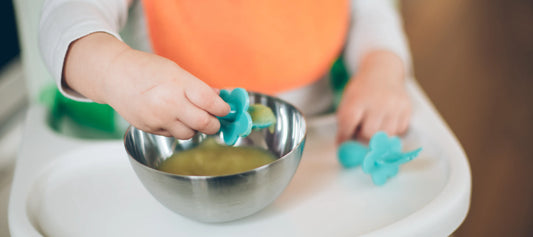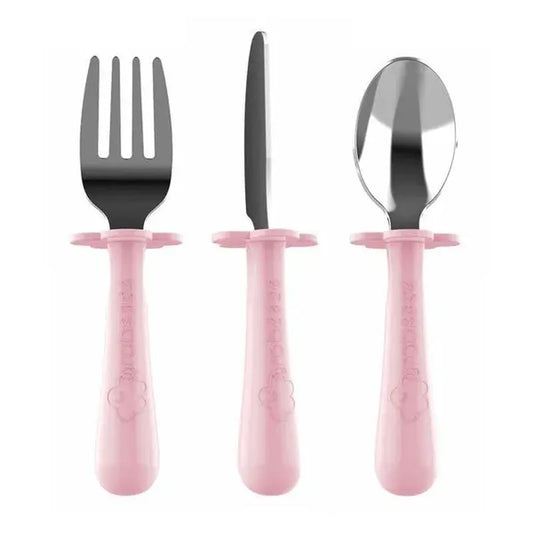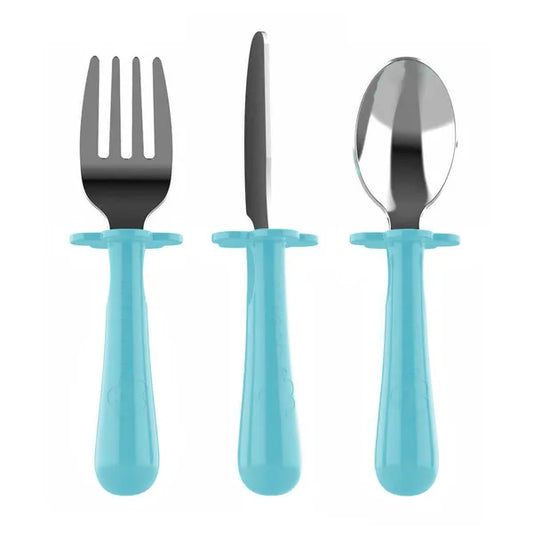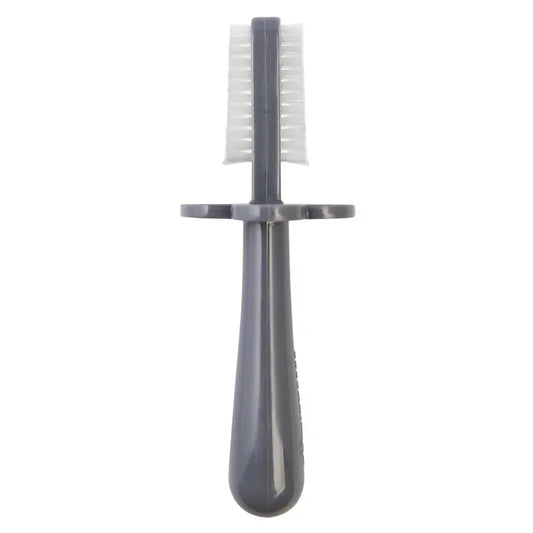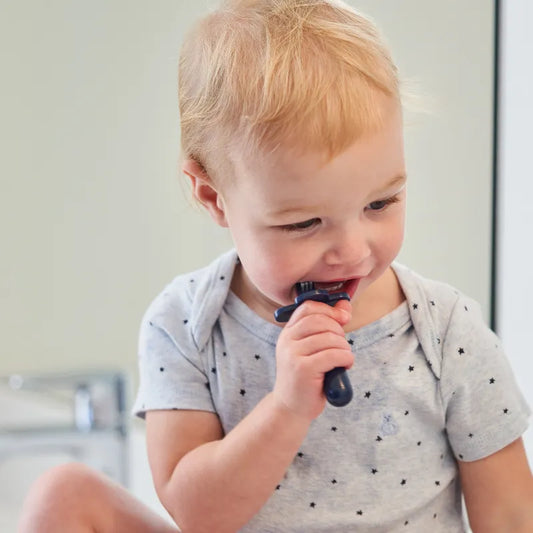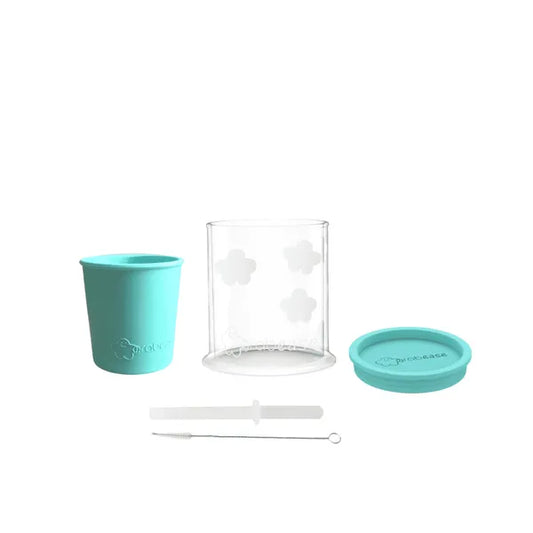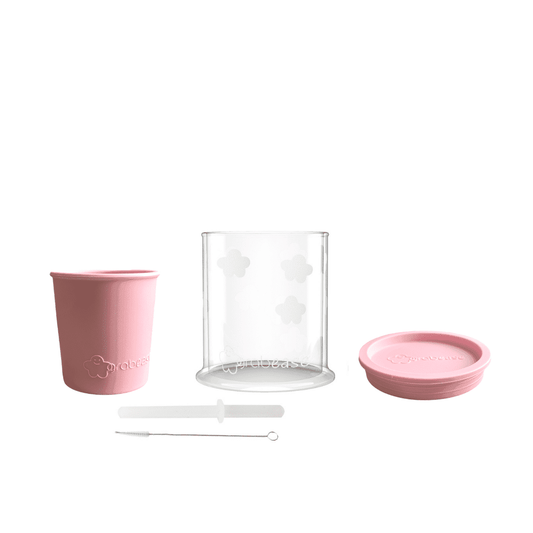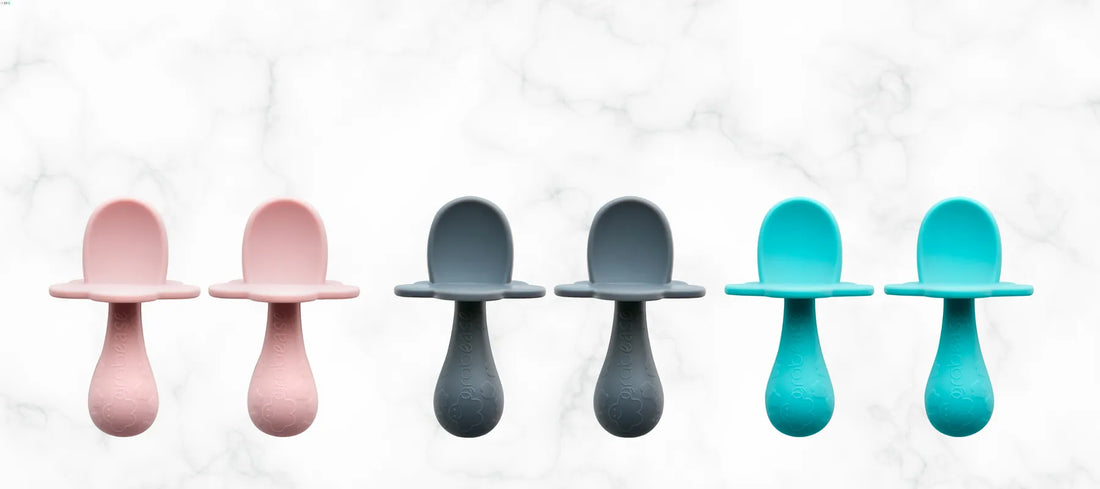
What is the best spoon for self-feeding?
Share
Not sure which spoon to choose when you start solids? Speech Pathologist and Feeding Specialist Melanie Potock walks you through the features that identify the best spoon for self-feeding.
It might surprise you to know that some speech language pathologists (SLPs) specialise in helping babies and toddlers progress through a tricky part of development called “feeding.”
Whether parents choose to follow a baby-self feeding model or present the spoon to baby’s mouth, or prefer a blend of both feeding styles, safety is the #1 priority. Another important priority is supporting the development of crucial fine motor skills, so that we set baby up for success.
It’s so tempting to hand baby a “standard” spoon straight from our cutlery drawer, but that’s asking a learning eater to eat with a shovel! It’s just not designed for beginner eaters or for little hands and mouths.
Fine motor skills aren’t just limited to hands and fingers, but include the tongue, lips and jaw too! Pick a spoon that is specifically designed for little mouths and to support fine motor development. Choose a spoon with four features, like the Grabease brand.
The size of the spoon matters in FOUR ways:
First, the “bowl” of the spoon, or the part that enters baby’s mouth needs to be just wide enough to hold the food without too much spilling in order to reduce frustration. It also must be that “just-right” size to be comfortable across the width of baby’s mouth from corner to corner of the adorable smile!
Second, the “bowl” also needs to be flat and third, not too long. Grabease utensils have a bonus feature. A specially designed lip-block prevents babies (or you) from putting the spoon too far back, causing gagging and/or depositing foods too close to the airway. The spoon can also be used as a teether, reaching the first half of baby’s tongue to help desensitise the gag reflex without causing discomfort.
Fourth, the handle needs to be short and squat, designed for little fists to grasp, even when slippery. Babies need to get very messy when exploring new foods & developing self-feeding skills. A vital part of learning to become an adventurous eater means exploring of new foods with all of the senses, including the tactile sense. That’s how baby’s learn and a little mess is a good thing!
Above all else, what matters most is the joy you bring to your family table! Raising a healthy, happy eater is a gradual journey that takes time and guidance. For more tips on how to help babies, toddlers and school-age kids learn to love a variety of foods, visit me at www.melaniepotock.com. I look forward to chatting!
About the Author

|
Melanie Potock, MA, CCC-SLP, is an international speaker on the topic of feeding babies, toddlers and school age kids. She is the co-author of the award-winning Raising a Healthy Happy Eater: A Stage-by-Stage Guide to Setting Your Child on the Path to Adventurous Eating (2015) and Baby Self-Feeding: Solutions for Introducing Purees and Solids to Create Lifelong Healthy Eating Habits (2016). The tips in cookbook for parents & kids, Adventures in Veggieland: Help Your Kids Learn to Love Vegetables with 100 Easy Activities and Recipes (2018) are based on the latest research and Melanie’s 20 years of success as a pediatric feeding therapist.
Contact her at www.MelaniePotock.com for more articles, professional tips, and helpful videos to raise your adventurous eater and follow Mel on Instagram and Facebook too! |


